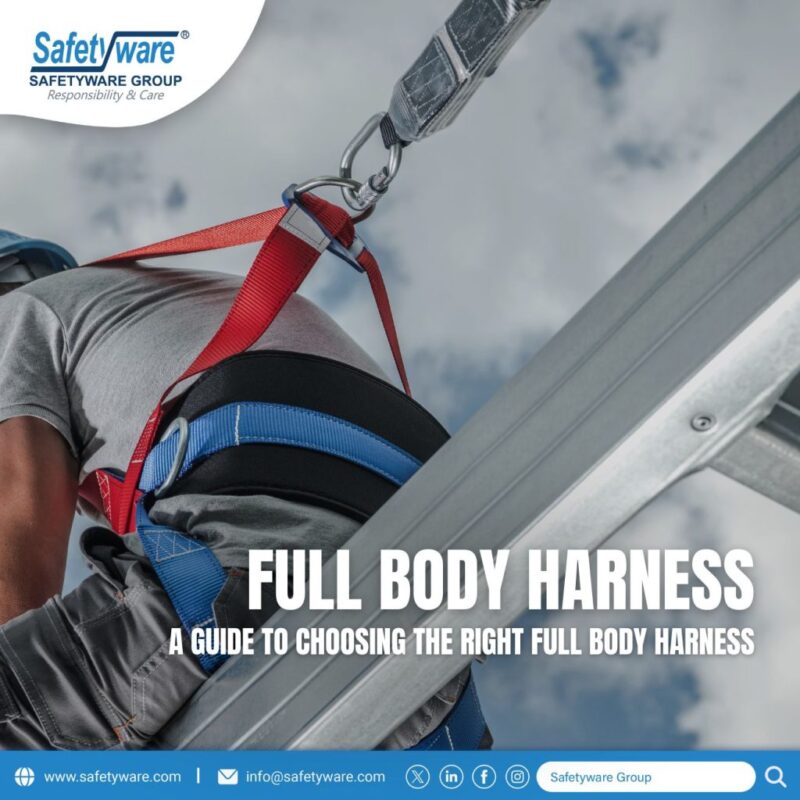Safety Knowledge
Selecting the Best Full Body Harness: A Technical Guide to Ensuring Maximum Safety
When it comes to working at heights or in hazardous environments, a full body harness is an indispensable piece of personal protective equipment (PPE). It is designed to protect workers from potentially life-threatening falls. Choosing the right full body harness requires a balance between safety, functionality, and user comfort. In this article, we will guide you through the technical aspects of selecting a full body harness, ensuring that you meet compliance standards and provide maximum protection for your workers.
The Critical Role of Full Body Harnesses in Fall Protection
Full body harnesses are engineered to distribute the impact forces of a fall across the body evenly. This helps reduce the risk of serious injury when a worker experiences a fall from height. Industries such as construction, maintenance, oil and gas, and utilities rely heavily on full body harnesses to protect workers from fall hazards. By equipping workers with the right harness, companies can mitigate risks, ensure regulatory compliance, and maintain a safe workplace.
Key Factors to Consider When Choosing a Full Body Harness
1. Safety Standards and Compliance
Ensuring that the full body harness meets stringent fall protection regulations is critical. Look for certifications such as ANSI Z359.11 and OSHA 1910.140. These standards verify that the harness has passed rigorous testing, including load capacity, durability, and structural integrity. Adhering to these regulations ensures that the harness will perform effectively in real-world applications, reducing liability and ensuring worker safety.
2. Proper Fit and Ergonomic Design
A well-fitted harness not only maximizes safety but also significantly enhances user comfort. Poorly fitted harnesses can cause discomfort, reduce mobility, and increase the risk of misuse. Look for features such as ergonomically designed straps that distribute pressure evenly, reducing discomfort in key areas like the thighs, shoulders, and hips. Comfort features such as padding, breathable materials, and anti-chafe designs are vital for workers who wear their harness for extended periods.
3. Adjustable and Versatile Features
Full body harnesses should feature multiple adjustment points to allow for a customized fit. Workers come in various sizes and shapes, so the ability to fine-tune the fit through adjustable chest straps, leg straps, and dorsal attachment points ensures a secure, tailored fit for each user. Additionally, adjustable D-rings offer flexibility to attach various fall arrest systems such as self-retracting lifelines (SRLs) or shock-absorbing lanyards.
4. Material Quality and Durability
The material of the harness directly impacts its longevity and safety performance. The webbing of a harness should be constructed from durable, abrasion-resistant materials such as high-tenacity polyester or nylon, which provide both flexibility and strength. Additionally, UV and chemical-resistant coatings can prolong the harness’s service life in harsh working environments. Metallic components, including buckles and D-rings, should be made of corrosion-resistant materials such as stainless steel or zinc-plated steel to withstand prolonged exposure to outdoor conditions.
5. Weight Capacity and Load Distribution
Understanding the maximum weight rating of a full body harness is essential for safety. The harness should support not only the worker’s body weight but also any additional equipment or tools carried during work. Most harnesses have a weight capacity between 130 and 310 lbs, but certain specialized harnesses are rated for higher weight capacities. Always ensure the harness aligns with the worker’s combined body weight and equipment load to prevent failure during fall arrest situations.
6. Key Features and Attachments for Specific Tasks
In addition to basic functionality, a modern full body harness often comes equipped with features that enhance safety and usability. For example:
- Integrated lanyard keepers allow workers to safely store unused lanyards.
- Tool loops and gear rings provide secure attachment points for tools.
- Reflective strips improve visibility in low-light environments, ensuring that workers remain visible at night or in dimly lit areas.
Selecting these additional features can significantly improve overall job performance, worker comfort, and safety, especially in specialized industries such as oil and gas, offshore wind farms, or confined spaces.
Conclusion: Prioritizing Safety through Informed Harness Selection
Choosing the right full body harness involves more than meeting minimum safety requirements—it’s about selecting equipment tailored to the specific needs of your workforce. Prioritizing key factors such as safety compliance, fit and adjustability, material durability, weight capacity, and additional features will help you protect workers while promoting efficiency in high-risk environments. Employers must continually review and update their PPE inventory, ensuring that their fall protection systems not only meet regulatory standards but also reflect the latest advancements in PPE technology.
Explore Our Body Harnesses

